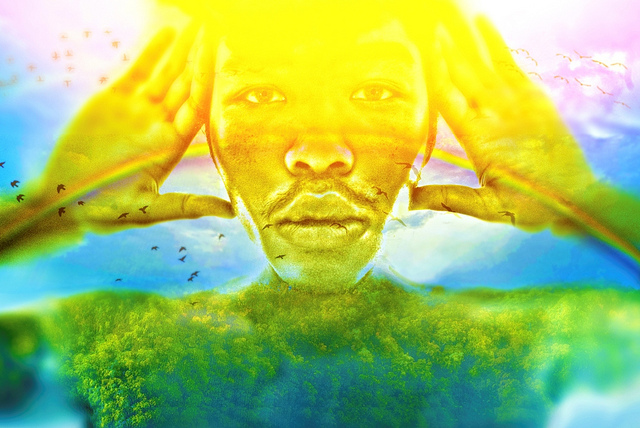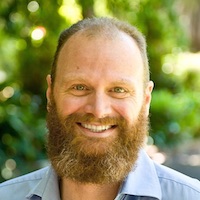
Editor’s Note: This website is not designed to, and should not be construed to, provide medical advice, professional diagnosis, opinion or treatment to you or any other individual, and is not intended as a substitute for medical or professional care and treatment. Always consult a health professional about before trying out new home therapies.
Around 12 years ago I began exploring lucid dreaming, which is a state of knowing when you are dreaming and learning to control your the dreams.
I started practicing techniques that would induce these dreams whilst I was in a hypnagogic state in order for me to experience a greater insight into my consciousness.
I found that if you can focus your awareness specifically to your pineal gland, you can begin to extend this period of consciousness, and release the limitations of the mind, allowing you to explore your consciousness with your whole being.
For some, this may manifest in forms of hallucinations, out-of-body experiences or even sleep paralysis. But for many, it is a doorway into their consciousness and, coupled with the natural DMT release of the pineal gland, allows for a deeper exploration of our conscious self.
The hypnagogic state is the state of consciousness between wake and sleep where your brain waves change to alpha-theta and you slip into the early stages of sleep. This state usually lasts for a moment before we begin dreaming.
There is also the hypnopompic state where we wake from our sleep. Both of which, until recently have been relatively unexplored as part of our conscious states. Scientists have reinvigorated their research into both of these states in recent years in the hope to reveal more about our consciousness.
The pineal gland is a pinecone shaped gland the size of a grain of rice located in the epithalamus, deep in the centre of the brain. It is an endocrine gland that produces melatonin, serotonin and effects the modulation of our sleep patterns. The pineal gland produces natural or “endogenous” dimethyltryptamine, DMT, the most powerful psychedelic, and possibly most powerful psychoactive substance known to man.
The pineal gland contains pigments similar to that found in the eyes and is connected to the optic thalami, hence it controls the action of light upon our body. The pineal gland is considered the third eye and has been an ancient symbol of the Sumerians, Egyptians, Hindus, and Theosophy for many thousands of years. It is also considered the Ajna Chakra and when activated leads us to expand our realm of consciousness.
Medical researcher Rick Strassman suggests in DMT: The Spirit Molecule, that the pineal gland releases endogenous DMT when we enter into a hypnagogic state characterized by predominant alpha-theta brainwaves.
We all enter this state of consciousness before we pass into and out of sleep, and as we experience it, our mind dissolves and our senses are heightened. Many scientists, inventors, artists and philosophers, like Beethoven, Walter Scott, Salvador Dali, Thomas Edison, Nicola Tesla and Isaac Newton attribute their greatest work to having visions, premonitions or prophecies during this hypnagogic state.
There are many techniques you can use to extend the hypnagogic state, the most common is a regular meditation practice, and to bring this practice into your state of awareness by observing all your senses simultaneously as you fall asleep.
Some use binaural beats, which is a set of audio frequencies that prompt your brain to resonate at a third frequency to place you in an alpha-theta brain wave state. It can be delivered with music through earphones to manifest this state but it doesn’t allow you to stay there of your own volition, and when you stop using these sounds, your brain waves readjust and you immediately slip back into your regular state of sleep.
Other simple techniques include;
1. On days when you have the time, have a short afternoon nap.
2. In the morning set your alarm for an hour before you wake up and set your snooze to a low peaceful sound for periods of 10 minutes. This will allow your body to go into and out of hypnagogia.
For me to activate my pineal gland before I go to sleep, I focus on the point in the centre of my forehead just above the eyebrows. I feel this point with a tingling sensation, then I visualise a straight line into the back of my skull. I then visualise a line between the tips of my ears, and focus on the point where those two lines intersect where these two lines intersect I then focus on that point.
I focus on feeling all my senses from that point, like seeing not through the eyes but from that point in the centre of the brain outward. I feel all my senses emanating at this exact point. I then visualise light radiating from this point within the brain. It is at this point that I move into hypnagogia and from there am carried on the wave of consciousness, often lasting through to the next morning.
When I wake from this state I feel energized and focused. Within these moments of hypnagogia I have experienced great understandings that have deepened my consciousness.
I find that we limit our understanding of our environment to our major senses.
When we begin to focus your awareness from the pineal gland, it expands our senses beyond the limitations of the mind. We begin to experience flashes that exist concurrently behind our veil of reality.
This state expands our awareness beyond the body, and we begin to feel our true energetic connection to all others and all beings. These experiences can provide us insights beyond the conscious understanding.
We can begin to understand that our purpose is far greater than our mind allows us to see.
This skill is not unique—we all experience hypnagogia every day when falling asleep and waking up. It is only a matter of being aware of this area of your consciousness and expanding it through patience, continued dedication to letting go of the mind and developing a meditative practice.
Author: Nathan Wellington
Image: Shan Sheehan/ Flickr
Editor: Sara Kärpänen











Read 0 comments and reply